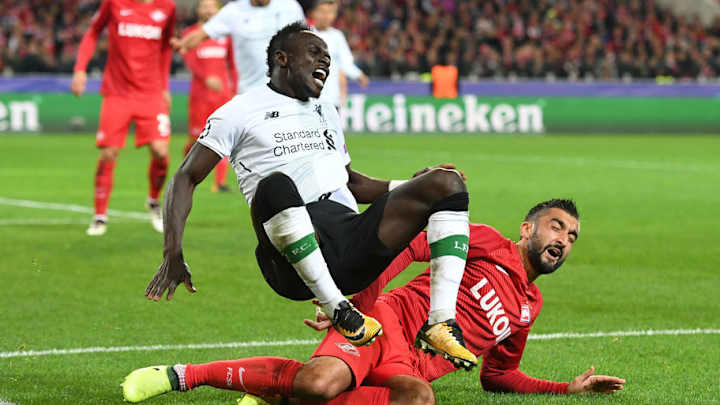Injury Analysis: Everything You Need to Know About Sadio Mane’s Hamstring in 1 Minute

Both Liverpool and the Senegal national team will miss their star winger Sadio Mane for a crucial period, due to a reported hamstring injury.
The worst thing about hamstring problems, as many professional footballers can tell you, is that re-injury rates are extremely high, with some studies claiming >50% re-injury rate within the same season.
Here’s everything you need to know about the MCL in one minute…
Liverpool Winger Mohammed Salah Has Called For the Club to 'Move Forward' Despite Mane Injury @Danyoude5 https://t.co/chonUu9JiN
— The GegenPress (@GegenPressPod) October 12, 2017
What are the Hamstrings?
The Hamstrings are a group of 4 muscles in the posterior thigh:
- Semi-membranousus and Semi-tendinosis muscles located at the lateral
- 2 bulks of the Bicep femoris muscle are at her medial side
Most injuries occur at the myotendinous junction – where the muscular ‘meat’ transitions into the cord-like tendon.
Some cases will have an avulsion fracture where the muscle pulls off a bit of the bone it was attached to.
What does it feel like?
- marked pain and extensive bruising at the posterior aspect of the thigh.
- In severe tears, there might be a palpable gap (or an enlarged muscular ‘lump’ which is due to the muscle belly contracting onto itself since its distal end is loose)
What should I do?
Most tears will heal after 4 weeks of RICE (Rest, Ice, Compression, Elevation) but tears with associated avulsion fractures might repair surgical repair.
The mainstay is to prevent/decrease repeated injuries.
Proper warm-up and stretching are theoretically useful, as are proprioceptive neuromuscular training and eccentric strengthening exercises (e.g. Nordic hamstring exercise).
When must I see a Doctor?
- If the pain is persistent and doesn’t improve within 2 weeks
- when there is marked pain at the most proximal (Ischial tuberosity) since that’s where avulsion fractures occur.
When can I resume playing?
In general, the patients are allowed to resume light training around 4 weeks and gradually increase it back to a normal training load.
Most players can safely return to competition when their strength reaches 90% of contralateral leg.
